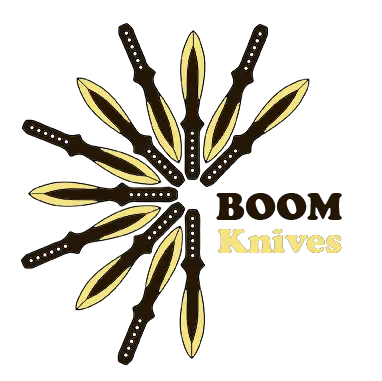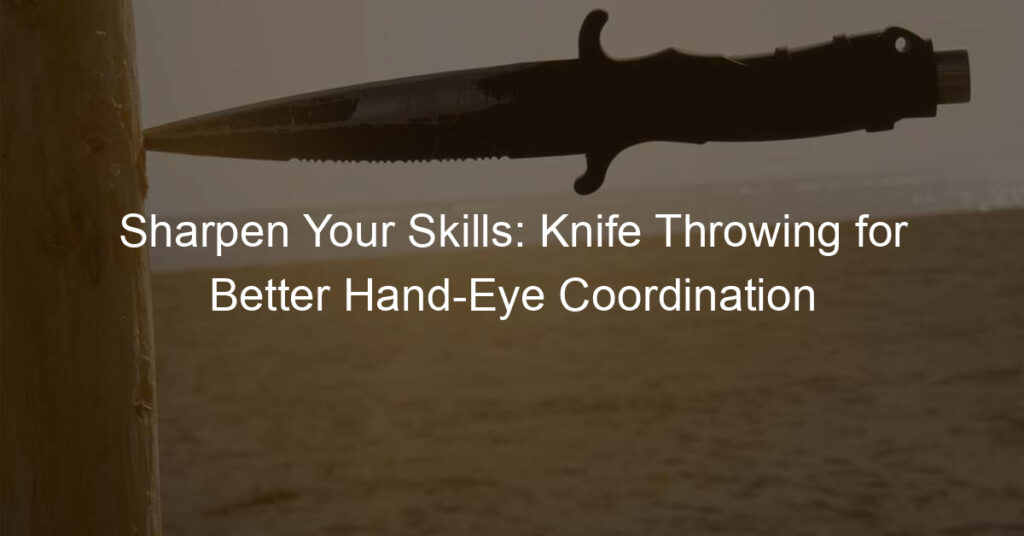Introduction to Throwing Knife Selection
A hobby or for sport, requires precision, skill, and the right equipment. One of the most crucial aspects of this activity is selecting the appropriate throwing knife. This article aims to guide you through the process of choosing the best throwing knife for your needs.
-
- Importance of choosing the right throwing knife
Selecting the right throwing knife is not just about picking the sharpest or the most expensive one. The right knife can enhance your throwing accuracy, ensure your safety, and make the whole experience more enjoyable. It’s about finding a knife that fits your hand comfortably, matches your throwing style, and suits your level of expertise. Wikipedia provides a comprehensive overview of the art and science of knife throwing, highlighting the importance of choosing the right equipment.
-
- Overview of the article
The basics of knife throwing, the different types of throwing knives available, and the factors to consider when choosing a throwing knife. We will also delve into professional throwing knives, safety measures to keep in mind, and conclude with key takeaways and tips for throwing knife enthusiasts. Whether you’re a beginner or a seasoned thrower, this article aims to provide valuable insights to enhance your knife throwing skills.
Beginners Guide to Knife Throwing
Knife Throwing
- History of knife throwing: It was first used as a hunting method by early humans. Over time, it evolved into a form of combat and self-defense. In the Middle Ages, knife throwing was a popular pastime at fairs and festivals. You can read more about it on Wikipedia.
- Modern knife throwing: A recognized sport with competitions held worldwide. It’s also a popular hobby for many people. Modern knife throwing involves throwing a knife at a target from a certain distance. The goal is to make the knife stick into the target. The sport requires precision, skill, and practice.
Basic Knife Throwing Techniques
-
- Handle Grip Technique
Ideal for beginners as it offers more control and stability. To perform this grip, place the knife’s handle in your hand, ensuring your fingers wrap around it securely. Your thumb should rest on the side of the handle, not on top. The knife should feel like an extension of your arm, allowing for a smooth and controlled throw.
-
- Blade Grip Technique
In this method, you hold the knife by its blade instead of the handle. This technique requires a delicate touch to avoid injury. To grip the blade, place your fingers on one side of the blade and your thumb on the other. Ensure your grip is firm but not too tight, as this could affect your throw’s accuracy. Safety is paramount when handling knives, especially when using the blade grip technique.
-
- Throwing Stance
A proper stance provides balance and power, essential for a successful throw. Stand with your feet shoulder-width apart, with your non-throwing foot slightly in front. Your body should be facing the target, with your throwing arm extended straight out in front of you. As you throw, your body should move fluidly, like a pendulum, to ensure a smooth and accurate throw.
Types of Throwing Knives
By Design
-
Balanced Knives
This design allows the knife to rotate uniformly when thrown, making it a popular choice for beginners. Balanced knives are versatile and can be thrown from either the blade or the handle, providing a consistent throwing experience. Wikipedia has an informative section about the physics of knife throwing that further explains this concept.
-
Blade-Heavy Knives
Design causes the knife to rotate slower when thrown, which can be beneficial for certain throwing techniques. Blade-heavy knives are typically thrown from the handle, which might require a bit more practice to master. However, once mastered, these knives can provide a high level of accuracy.
-
Handle-Heavy Knives
This design causes the knife to rotate faster when thrown. These knives are typically thrown from the blade. While they might be challenging for beginners, handle-heavy knives can offer a unique throwing experience and are favored by some professional knife throwers for their speed and precision.
By Material
-
Stainless Steel Knives
A popular material for throwing knives due to its durability and resistance to rust. These knives are easy to maintain and can withstand various weather conditions, making them a great choice for outdoor use. However, they may not be as sharp as carbon steel knives, which might affect their performance in certain situations.
For example, the Gil Hibben line of throwing knives are made from high-quality stainless steel, known for their balance and durability. They are a favorite among professionals and beginners alike.
-
Carbon Steel Knives
They can be honed to a razor-sharp edge, which can improve their performance in terms of accuracy and penetration. However, they require more maintenance as they are prone to rust if not properly cared for.
One notable example of a carbon steel throwing knife is the Smith & Wesson Bullseye series. These knives are known for their sharpness and precision, but they do require regular maintenance to keep them in top condition.
Choosing a Throwing Knife: Factors to Consider
-
- Weight of the Knife
A heavier knife can provide more force, but it may also be more challenging to throw accurately. On the other hand, a lighter knife may be easier to throw, but it might not have the same impact. The ideal weight for a beginner’s throwing knife is between 200 to 300 grams.
-
- Length of the Knife
A longer knife tends to spin slower in the air, making it easier for beginners to learn the art of knife throwing. A good starting length is around 12 to 14 inches. However, as you progress, you may prefer a shorter or longer knife depending on your throwing style.
-
- Material and Durability
Stainless steel is a popular choice due to its strength and resistance to rust. However, other materials like carbon steel can also be excellent choices. Make sure to choose a knife that is sturdy and can withstand repeated throws.
-
- Design and Balance
A well-balanced knife will rotate consistently in the air, improving your accuracy. The handle and blade should be of equal weight for the best balance. Also, consider the knife’s design. A simple, streamlined design is usually the best for throwing.
-
- Price and Brand
While you don’t need to buy the most expensive knife, it’s worth investing in a quality product from a reputable brand. This ensures that you’re getting a knife that is designed for throwing and will last a long time.
Professional Throwing Knives
Top Throwing Knife Brands
-
- Brand A
A favorite among professionals due to its exceptional balance and durability. The knives from this brand are made with high-quality steel, ensuring they can withstand repeated throws. Their designs are also ergonomic, providing a comfortable grip for throwers.
-
- Brand B
Known for its wide range of throwing knives. Whether you prefer a lightweight knife for quick throws or a heavier one for more power, this brand has got you covered. Their knives are also well-balanced, ensuring accurate throws every time.
-
- Brand C
Their knives are not only durable and well-balanced, but they also come with a sleek design that many throwers appreciate. The sharpness of their blades is also noteworthy, making them a great choice for competitive throwing.
Case Study: Professionals’ Choice
- Case Study 1: The Precision ThrowerMeet John. He’s a professional knife thrower who has been in the business for over a decade. John prefers a balanced throwing knife, which he says gives him the precision he needs. He uses the Brand A throwing knife, which is known for its perfect balance and sharpness. He’s won several competitions using this knife. John’s experience shows that a well-balanced knife can significantly improve your throwing accuracy. You can read more about balanced throwing knives on Wikipedia.
- Case Study 2: The Distance ThrowerNow, let’s talk about Lisa. Lisa is a long-distance knife thrower. She needs a knife that can travel great distances and still hit the target accurately. For this, she uses the Brand B throwing knife. This knife is heavier than most, which allows it to travel further. Lisa has set several records for long-distance knife throwing using this knife. Her success demonstrates that the weight of the knife is a crucial factor to consider for long-distance throwing. You can learn more about the physics of knife throwing on Wikipedia.
Knife Throwing Safety
-
- Proper handling of knives
Always hold the knife by the handle and not the blade. When passing a knife to someone else, offer the handle first. Never run or engage in horseplay while holding a knife. A throwing knife is not a toy. It’s a tool that requires respect and caution. For more information on knife handling, check out this Wikipedia article on knife safety.
-
- Safety gear
Wearing the right safety gear can prevent injuries. This includes sturdy gloves to protect your hands, safety goggles to shield your eyes from any flying debris, and closed-toe shoes to safeguard your feet. It’s also a good idea to wear long-sleeved shirts and pants to protect your skin.
-
- Safe throwing practices
Always throw knives in a designated area, away from people and pets. Ensure the target is sturdy and can withstand the impact of the knife. Never throw a knife towards a person or an animal. Always retrieve your knives after everyone has finished throwing, and never walk towards the target while someone is throwing. Practicing these safe throwing habits will help keep you and others safe.
Key Takeaways and Throwing Knife Tips
- Summary of the Article: A comprehensive guide on throwing knife selection, starting from an introduction to the art of knife throwing, to understanding the different types of throwing knives available. We’ve also discussed the factors to consider when choosing a throwing knife and highlighted some professional throwing knives. Lastly, we’ve emphasized the importance of safety when practicing this skill.
- Additional Tips for Throwing Knife Selection: The best throwing knife is the one that feels right in your hand. It’s not just about the weight or the length, but also about the balance and the grip. It’s always a good idea to try out a few different types before making a decision. Additionally, consider the material of the knife. Stainless steel is a popular choice due to its durability and resistance to rust. For more information, you can refer to this Wikipedia article on throwing knives.
- Next Steps in Mastering Knife Throwing: Now that you have a better understanding of throwing knife selection, it’s time to practice. Start with a safe, designated area for throwing, preferably with a soft target to minimize potential damage. Always ensure you’re throwing at a safe distance from other people and objects. Practice your stance, grip, and throwing technique consistently.






